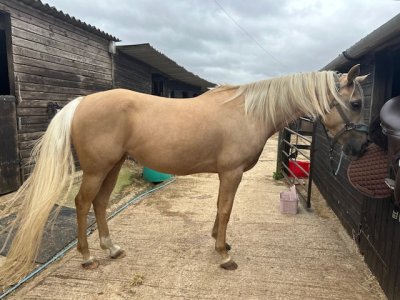LadyGascoyne
Still Fig-uring it out...
Can you get her out being ponied from another horse to build up more muscle before thinking of getting a rider back on her? Or more in hand walks over poles?
She does not yet look ready to carry a rider of any weight, whatever your vet says.
No, it wouldn’t be safe. And walking in hand just isn’t working. She has a much greater chance of re-injuring herself if she’s being silly, and she’s absolutely sweet under saddle.
I really don’t want to have to go into essays on this, but the vets are clear, the physio agrees, the pros agree, and I know the horse and agree. They all see the horse regularly, rather than a snapshot on a forum and they can see how she moves. Everyone who has physically seen the horse has the same opinion, and they will have a more holistic view of her. Sometimes balancing rehab needs isn’t simple but the most important thing is that we get the walking done, and that is most safely done from the saddle.
Hence I’m making a saddle decision, and that is why I have asked for thoughts. I’m aware of needing to be super light and unobtrusive on the horse at the moment because in the ideal world without the need for all the walking, there is a lot you can do in walk, trot and canter in the school without as saddle, but we aren’t there. We can walk, straight, without twisting, and she’s not going to do that properly without being under saddle. So I’m thinking about mitigating risks but I’m not unsure of our course of action.
Last edited:




